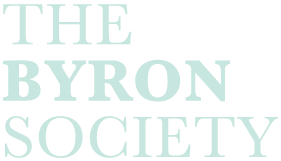If you would like to suggest a book for inclusion on this page, please get in touch via our contacts page or email our Director, Dr Emily Paterson-Morgan, via contact@thebyronsociety.com
CLAIRMONT by Lesley McDowell

Claire Clairmont – the incredible woman that history tried to forget.
But in the year that will mark the 200th year anniversary of Lord Byron’s death, Claire will finally find her voice and tell her side of the story of that fateful Geneva trip.
A massive volcanic eruption has caused the worst storms that Europe has seen in decades, yet Percy Shelley and Mary Godwin have chosen to visit the infamous Lord Byron at his villa on Lake Geneva. It wasn’t their idea: Mary’s eighteen-year-old stepsister Claire Clairmont, insisted.
Phillip Shaw, Wordsworth After War: Recovering Peace in the Later Poetry

William Wordsworth’s later poetry complicates possibilities of life and art in war’s aftermath. This illuminating study provides new perspectives and reveals how his work following the end of the revolutionary and Napoleonic wars reflects a passionate, lifelong engagement with the poetics and politics of peace. Focusing on works from between 1814 and 1822, Philip Shaw constructs a unique and compelling account of how Wordsworth, in both his ongoing poetic output and in his revisions to earlier works, sought to modify, refute, and sometimes sustain his early engagement with these issues as both an artist and a political thinker. In an engaging style, Shaw reorients our understanding of the later writings of a major British poet and the post-war literary culture in which his reputation was forged.
Gordon Ferries, Stanzas for Music
Presenting a brand new music book by Edinburgh based guitarist, composer and Byron society member Gordon Ferries,. ‘Stanzas for music’ (published by Bergman editions) features four songs for voice and classical guitar to poems by Coleridge, Shelley, Keats and Byron. The featured poems all address the transcience of time and nature. The Coleridge text is the section of ‘Christabel’ that Byron used as an epigraph for ‘Fare thee well, his poem about his disasterous marriage to Anabella Millbanke and his imminent exile to the continent. Byron also famously read from Coleridge’s vampiric’ Christabel’ during the notorious ghost story sessions at the Villa Diodati in 1816, where both Mary Shelley’s Frankenstein and Polidori’s’The Vampyre’ were both concieved. The collection also contains settings of Shelley’s ‘Mutability’ Byron’s ‘There’s not a joy the world can give’ (Stanzas for music) and a section of Keats’ ‘Sonnet, on the sea’ The songs can be sung by soprano or tenor.
David Ellis. Byron.

In this new book, David Ellis traces Byron’s life from rented lodgings in Aberdeen to the crumbling splendours of Newstead Abbey and then on to his grand tour of the East. Describing his exile from England after a disastrous marriage, and subsequent travels in Italy and Greece, he shows how completely Byron’s experiences coloured his writings, drawing out the tension between the ‘serious’ works (Childe Harold, The Corsair) and his more comic writings. Although the former brought him early fame and fortune, it is the latter which now seem most worthwhile. Byron is a fresh, concise and clear-eyed account of the flamboyant poet’s life and work.
Ioannes P. Chountis. Romanticism in Power. Aspects of Lord Byron’s Political Ideology and His Participation to the Greek War of Independence. Athens: Armos Publications, 2022 (in Greek)

What were the true political opinions of Lord Byron? What did he think about the revolutions that shook Continental Europe in the 18th and 19th centuries? How he thought of the Greeks and why his participation to the Greek War of Independence was pivotal to its success? How to discern the myth from the historical reality? Those are just some of the questions for which this book seeks answers to. A combination of historical research and lively narration, this book is aimed both at the specialized readers, searching for more information on the Romantic poet’s career and those who desire for a general introduction to the topic. It, thus, constitutes a contribution to modern European and Greek history. Overall, who was Lord Byron and why his life’s deeds remain pertinent to Europe’s challenges today?
This book examines the political views of Lord Byron and his participation to the Greek Revolution of 1821. Particular emphasis is placed not on Byron’s much-analyzed poetry, but on the rather neglected and underappreciated subject of his opinions on various political issues, ranging from the revolutions in continental Europe, social reforms in Regency Britain, to his views on the ideal constitution. Furthermore, through the close reading of his correspondence, his critical and decisive role in the Greek Revolution as well as his disappointments are highlighted. Shortly after the bicentennial of the Greek Revolution of 1821 and before the completion of two hundred years since the death of Lord Byron, this book attempts to highlight the bridges of cooperation and friendship between Greece, Europe, and the United Kingdom.
Graham Davidson, The Intelligible Ode: Intimations of Paradise
In this monograph, Graham Davidson traces the origins of Wordsworth’s poetic impetus to his resistance to the Cartesian division between mind and nature, first adumbrated by the Cambridge Platonists. If reunited, Paradise was regained, but this personal trajectory was tempered by a deep sympathy for the woes of mortal life. Davidson explores the consequent dialogue through some of Wordsworth’s best-known poems, at the heart of which is the Ode. In the last section, he demonstrates how Wordsworth’s publishing history led the Victorians and modernists to misinterpret his work; if one considers Eliot’s Four Quartets as odes, facing several of the same problems as did Wordsworth, there is some irony in Eliot’s dismissal of the Immortality Ode as ‘verbiage’.
Book details and purchase here.
Reading Byron: Poems – Life – Politics by Bernard Beatty

The most important thing to do with Byron is to read him rather than read about him. If we do so, argues Bernard Beatty in Reading Byron his third/new book on Byron, we will encounter not only the music and wit of his verse but also what early readers identified as his ‘force’ and ‘thought’. They took this seriously and so should we. They responded deeply to ‘dark’ elements in his heroes and in his thinking which many twentieth-century readers and critics patronised or ignored.
Bernard Beatty agrees that Don Juan is his greatest poem but argues that the force of Byron cannot be fully registered unless we again attend to and find a way of reading his ‘dark’ poems and take his thought seriously. This book tries to show what such a way might be. This is the heart of the book and it is new but there are some shorter chapter on Byron’s Life and Politics which originated as articles or lectures but have been refashioned for the book.This is a new and timely approach to reading Byron by someone who has devoted much of his life to reading, writing, and thinking about him.
An Impossible Interview with Lord Byron (Intervista impossibile a Lord Byron) by Vincenzo Patane
In this monograph, Graham Davidson traces the origins of Wordsworth’s poetic impetus to his resistance to the Cartesian division between mind and nature, first adumbrated by the Cambridge Platonists. If reunited, Paradise was regained, but this personal trajectory was tempered by a deep sympathy for the woes of mortal life. Davidson explores the consequent dialogue through some of Wordsworth’s best-known poems, at the heart of which is the Ode. In the last section, he demonstrates how Wordsworth’s publishing history led the Victorians and modernists to misinterpret his work; if one considers Eliot’s Four Quartets as odes, facing several of the same problems as did Wordsworth, there is some irony in Eliot’s dismissal of the Immortality Ode as ‘verbiage’.
Shelley’s Broken World- Fractured Materiality and Intermitted Song by Bysshe Inigo Coffey
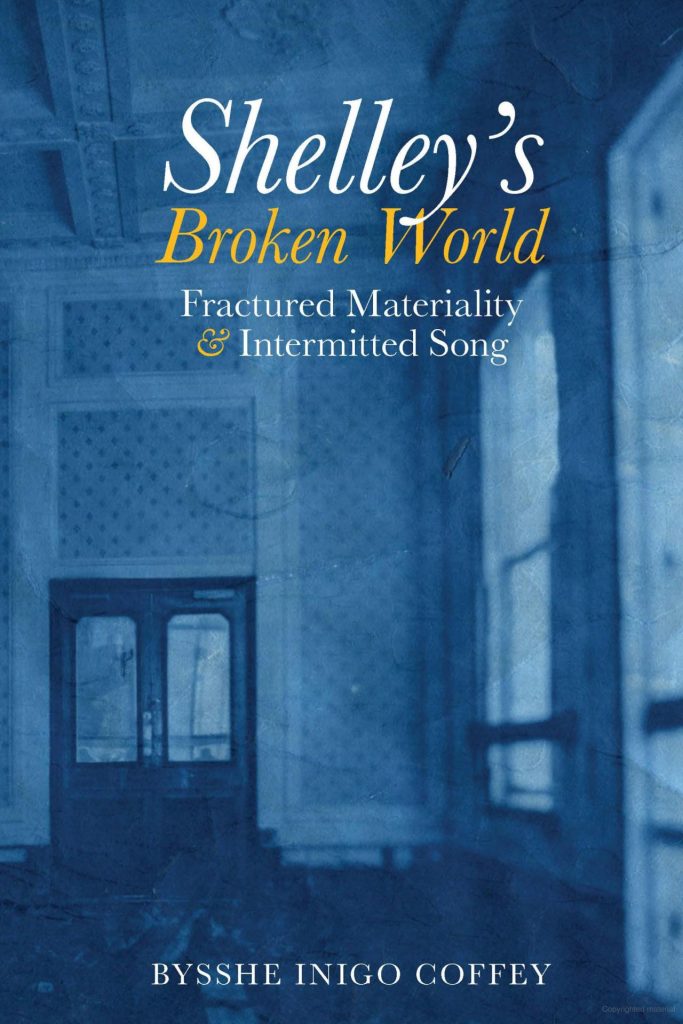
This new volume of JHU Press’s landmark Shelley edition contains posthumous poems edited from original manuscripts. “The world will surely one day feel what it has lost,” wrote Mary Shelley after Percy Bysshe Shelley’s premature death in July 1822. Determined to hasten that day, she recovered his unpublished and uncollected poems and sifted through his surviving notebooks and papers. In Genoa during the winter of 1822–23, she painstakingly transcribed poetry “interlined and broken into fragments, so that the sense could only be deciphered and joined by guesses.”
Blasphemy and sedition laws prevented her from including her husband’s most outspoken radical works, but the resulting volume, Posthumous Poems of Percy Bysshe Shelley (1824), was a magnificent display of Shelley’s versatility and craftsmanship between 1816 and 1822. Few such volumes have made more difference to an author’s reputation.
The seventh volume of the acclaimed Complete Poetry of Percy Bysshe Shelley extracts from Posthumous Poems those original poems and fragments that Mary Shelley edited. The collection opens with Shelley’s enigmatic dream vision The Triumph of Life, the last major poem he began—and, in the opinion of T. S. Eliot, the finest thing he ever wrote. There follow some of the most famous and beautiful of Shelley’s short lyrics, narrative fragments, two unfinished plays, and other previously unreleased pieces.
Dangerous to Show: Byron and his Portraits, by Geoffrey Bond and Christine Kenyon Jones
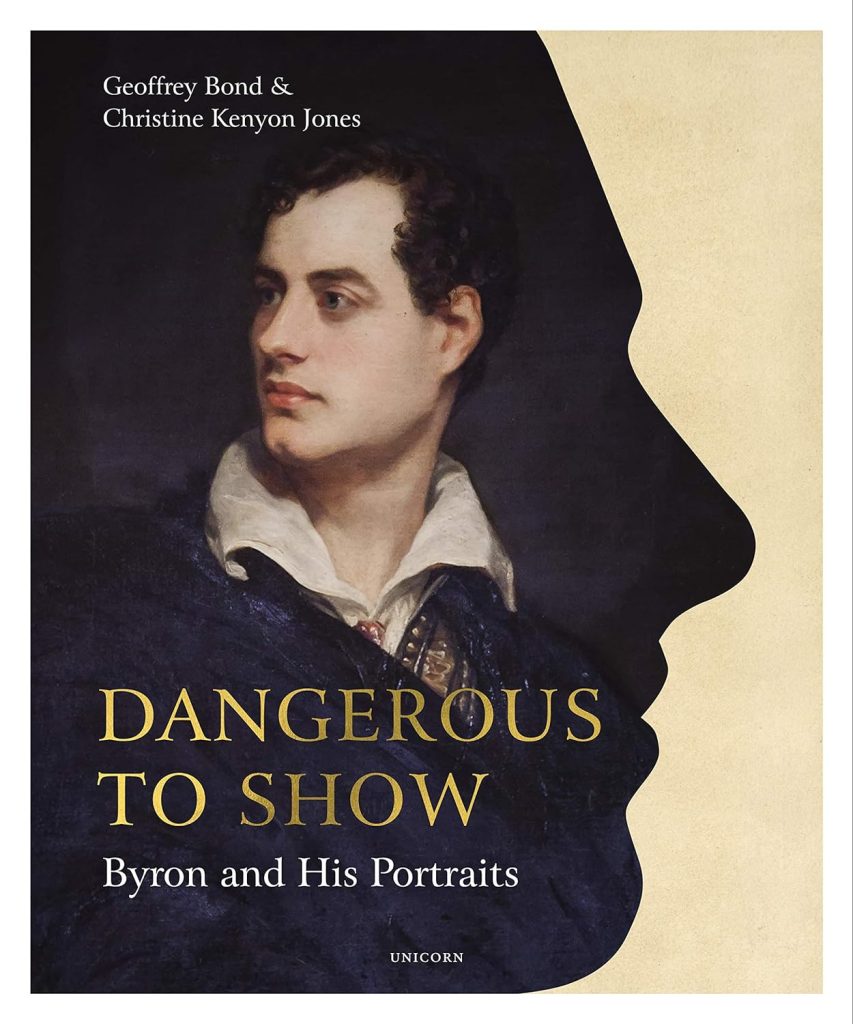
‘Don’t look at him. He is dangerous to look at’, Lady Liddell instructed her daughter on seeing Byron in Rome in 1817. Handsome, charismatic, aristocratic and allegedly ‘Mad – bad – and dangerous to know’, Lord Byron (1788–1824) is one of the most captivating and recognisable figures of the Romantic and Regency Age. His face, figure and appearance added greatly to the appeal of his poetry, and the close association of the man with his poetic creations encouraged a wide range of artists to create portraits during his lifetime and to memorialise him after his death in Greece. [/ezcol_2third_end]
This book explores Byron’s life through the intriguing stories behind these images, and for the first time reveals in colour the key paintings, miniatures, sculptures, drawings and sketches, as well as prints, cartoons, engravings and Byron memorabilia. It uses Byron’s own forthright and witty words to recount his responses to ‘Byromania’ and his attempts to manage his own image through the way he was presented in his portraits, as well as through fashion, weight control and the disguise of his lameness.
You do not have to be a Byromaniac to enjoy this sparkling survey of his Lordship’s wildly shifting iconography through two centuries of celebrity and notoriety. The fantastic transformation of Byron’s image, from solemn portraiture to souvenir pottery, from memorabilia to merchandising, from marble to mockery, from miniatures to movies (I could go on) is constantly surprising and instructive. It’s also a great deal of fun, a brilliant revelation of poetic fashions and fandom. The authors successfully combine scholarship with mischief, and throw fresh light on the enduring provocations of Byron’s poetry and personality, not least the astonishing fact that he was not admitted to Poets’ Corner, Westminster Abbey until 1969. (Richard Holmes)
The book is coming out later in 2020. .
The Virtues of Scandal by Richard Abramson

Reveling in his unprecedented literary success, George Gordon, the 6th Lord Byron, is less famous than notorious. His all-too-public affair with Lady Caroline Lamb, the sexually energetic young wife of a rising Tory politician, is the talk of London; so too the nagging rumors of an incestuous relationship with his half-sister, Augusta Leigh. With the publication of the first cantos of his masterpiece Don Juan, Byron’s sexual indiscretions, radical politics and hilariously acid verse earn him the enmity of some of England’s most powerful figures, including poet laureate Robert Southey and Foreign Secretary Robert Castlereagh.
As the waters of scandal rise, and Byron becomes the unwitting pawn in a vast conspiracy that reaches to the highest levels of government, England’s most famous and incandescent poet must decide for what – and for whom – he is prepared to make a terrible sacrifice.
Set in Seville, London, Constantinople, Ottoman Greece and St. Petersburg during the first decades of the 19th century, The Virtues of Scandal is a thrilling tale of conspiracy, scandal, betrayal and courage. Interlacing three narratives that span more than a decade and include the rousing adventures of Don Juan himself, the novel is rich with historical detail, bringing to life the gifts, flaws and contradictions that number Byron among the greatest of poets and the most confounding of men.
The Fall of the House of Byron- Scandal and Seduction in Eighteenth-Century England by Emily Brand
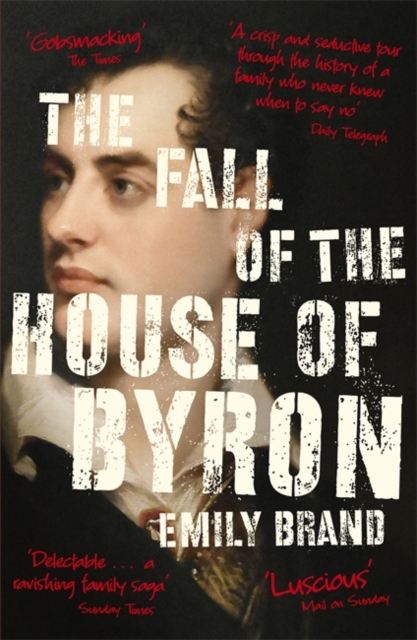
At the beginning of the eighteenth century, Newstead Abbey was one of the most prosperous and fashionable aristocratic homes in England. It was the abode of William the 4th Baron Byron – a popular and successful composer and artist – and his teenage wife Frances. But only a few decades later, at the end of the century, the building had become a crumbling and ill-cared-for ruin. The 4th Baron and most of his relatives had died, leaving the incumbent owner, William the 5th Baron Byron (the ‘Wicked Lord’), lying on his deathbed alongside his last remaining servant and amidst a thriving population of crickets.
This was the home that a small, pudgy boy of ten from Aberdeen – who the world would later come to know as Lord Byron, the Romantic poet, soldier, and adventurer – would inherit in 1798. His family, he would come to learn, had in recent decades become known for almost unfathomable levels of scandal and impropriety, from elopement, murder, and kidnapping to adultery, coercion, and thrilling near-death naval experiences. Just as it had shocked the society of Georgian London, the story of the Byrons, and the folklore of their outlandish scandal, would influence his life and poetry for posterity.
The Fall of the House of Byron follows the fates of Lord Byron’s ancestors over three generations in a drama that begins in rural Nottinghamshire and plays out in the gentlemen’s clubs of Georgian London, amid tempests on far-flung seas, and in the glamour of pre-revolutionary France. A compelling story of a prominent and controversial characters, it is a sumptuous family portrait and an electrifying work of social history
Byron: Reality, Fiction and Madness eds. Miroslawa Modrzewska and Maria Fengler

This book explores the amorphous, fragmented and digressive world of George Gordon Byron’s poetic works, which are pervaded by the themes of change, mutability, deformation and transgression, often presented or described as madness. The blurring of the border between fiction and reality is a matter of the author’s decisions concerning both his life and his texts, and a conscious process of construction and self-fashioning. It is also a recurring epistemolog¬ical theme in Byron’s works, which takes the form of narrative dis-orientation and the dismantling of easy cultural pre-conceptions. The Authors study Byron’s artistic quixotism and his pursuit of creative freedom, which reveals itself in the Romantic irony, digressiveness and self-awareness of his writings.
© olaf gloeckler, atelier platen, friedberg, coverdesign, umschlaggestaltung, umschlagentwurf
More details and purchase options.
The Imprisoned Traveller: Joseph Forsyth and Napoleon’s Italy, by Keith Crook

The Imprisoned Traveler is a fascinating portrait of a unique book, its context, and its elusive author. Joseph Forsyth, traveling through an Italy plundered by Napoleon, was unjustly imprisoned in 1803 by the French as an enemy alien. Out of his arduous eleven-year “detention” came his only book, Remarks on Antiquities, Arts, and Letters during an Excursion in Italy (1813). Written as an (unsuccessful) appeal for release, praised by Forsyth’s contemporaries for its originality and fine taste, it is now recognized as a classic of Romantic period travel writing.
Keith Crook, in this authoritative study, evokes the peculiar miseries that Forsyth endured in French prisons, reveals the significance of Forsyth’s encounters with scientists, poets, scholars, and ordinary Italians, and analyzes his judgments on Italian artworks. He uncovers how Forsyth’s allusiveness functions as a method of covert protest against Napoleon and reproduces the hitherto unpublished correspondence between the imprisoned Forsyth and his brother.
The book can be purchased in America here, and will be available in the UK from February here.
A Shadowed Fate by Marty Ambrose
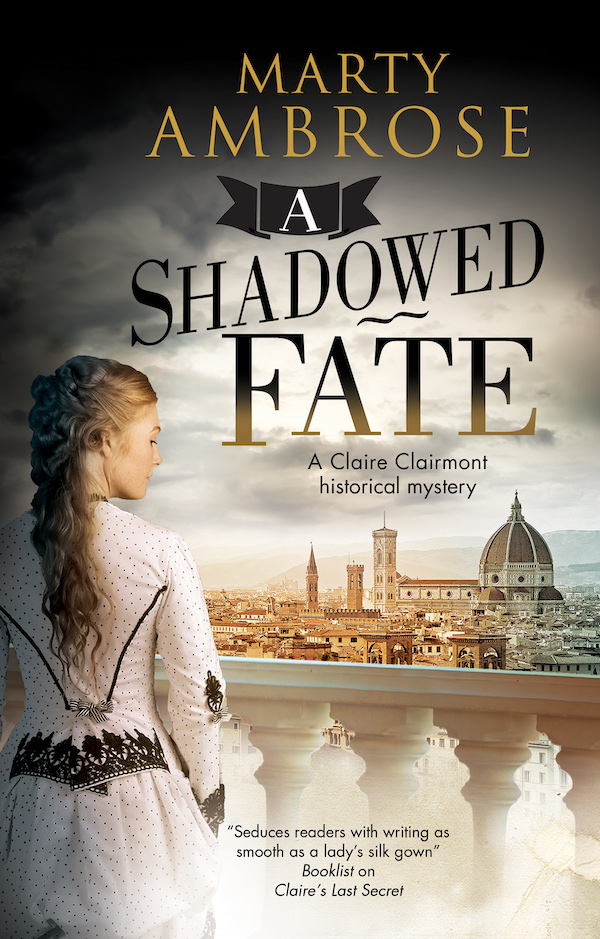
Florence. July, 1873. Claire Clairmont, the last survivor of the ‘haunted summer of 1816’ Byron/Shelley circle, is reeling from the series of events triggered by the arrival of Michael Rossetti two weeks before, which culminated in a brutal murder and a shocking revelation from her old friend, Edward Trelawny. Her calm life in Italy has been changed forever.
Stunned by her betrayal at the hands of those closest to her, Claire determines to travel to the convent at Bagnacavallo near Ravenna to learn the true fate of Allegra, her daughter by Lord Byron—
a journey that would allow Claire to lay her tumultuous past to rest. But the valuable Cades sketch given to her by Rossetti is stolen, and Claire soon finds herself shadowed at every turn and in increasing danger as she embarks on her quest.
Is the theft linked to Allegra, and can Claire uncover what really happened in Ravenna so many years ago?
The Sour Fruit. Lord Byron, Love & Sex by Vincenzo Patanè

Byron’s emotional and erotic life, which he indulged with an unstoppable energy, is a key element in understanding his powerful and passionate personality, as well as the society of his day, which was scandalised by his behaviour even while being conquered by his extraordinary charm. The Sour Fruit. Lord Byron, Love & Sex – translated by John Francis Phillimore from the Italian edition I frutti acerbi. Lord Byron, gli amori & il sesso, Venice, Cicero, 2016 – looks at the poet’s now generally acknowledged bisexuality in all its aspects, from his fleeting liaisons to his love-affairs, female (his half-sister Augusta, Caroline Lamb and Teresa Guiccioli) and male (John Edleston, Nicolo Giraud and Loukas Chalandritsanos).
The book’s original approach provides unusual and fascinating insights, notably into Byron’s homosexuality, hitherto relatively unexplored, and reveals a more truthful picture of the poet. Byron was strongly attracted to boys, who are referred to in Don Juan as ‘sour fruit’. In his adolescence he had fallen for aristocratic contemporaries but would later be attracted to boys of a lower social station. He had several same-sex experiences in England, encouraged by the circle he frequented at Cambridge, particularly his friend Matthews, as well as during his Grand Tour, during which he was able to freely live out behaviours frowned on at home.
An appended chapter examines Don Leon, an anonymous work purporting to be by Byron himself and salaciously recounting his love-life, which was first published some forty years after his death and has been on more than one occasion banned for obscenity.
Beethoven: The Reventless Revolutionary by John Clubbe
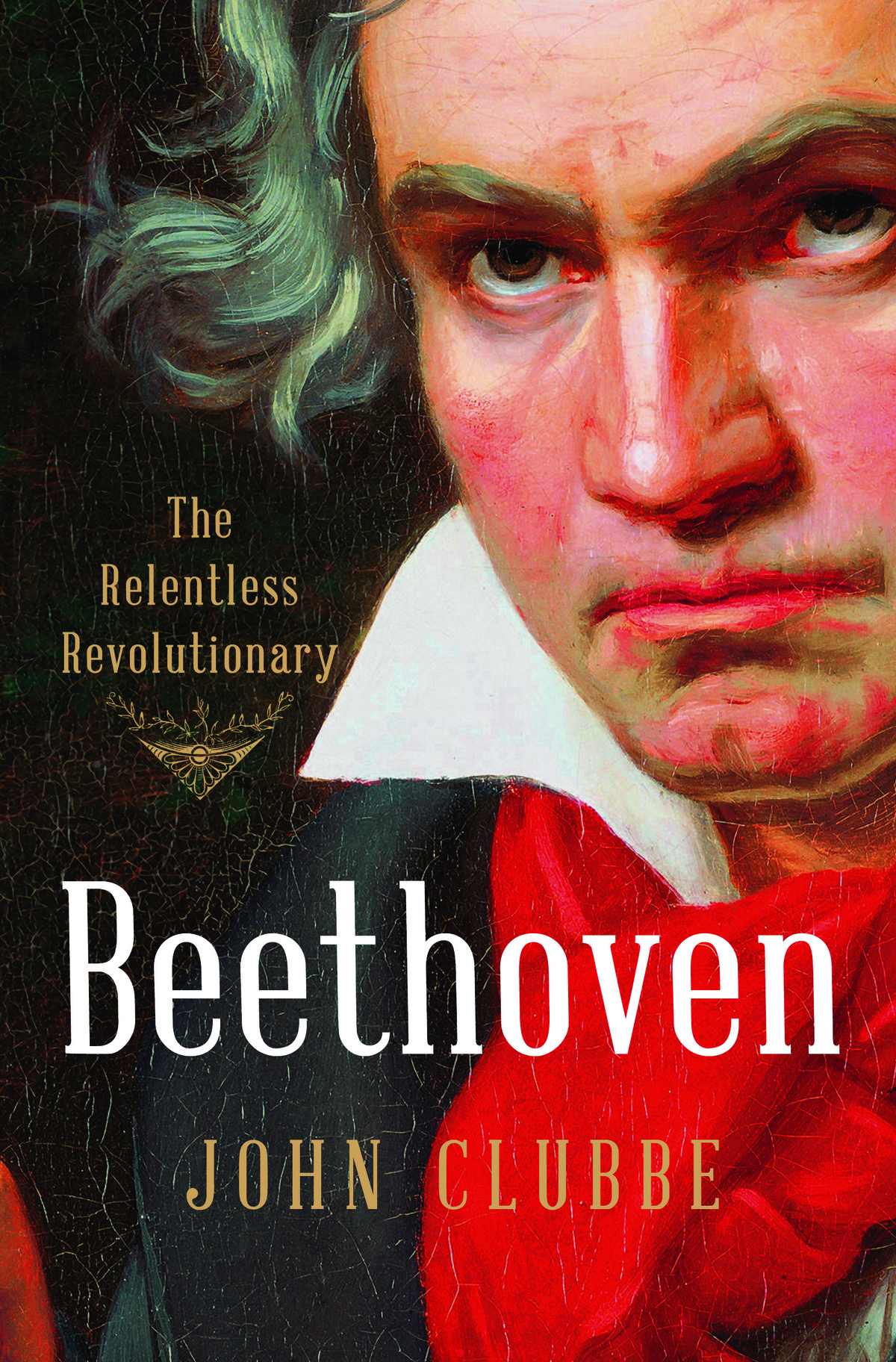
Moving to Vienna at the age of twenty-one to study with Haydn, Beethoven gained renown as a brilliant pianist and innovative composer. In that conservative city, capital of the Hapsburg empire, authorities were ever watchful to curtail and punish overt displays of radical political views. Nevertheless, Beethoven avidly followed the meteoric rise of Napolean. John Clubbe illuminates Beethoven as a lifelong revolutionary through his compositions, portraits and writings, and by setting him alongside major cultural figures of the time such as Schiller, Goethe, Byron, Chateaubriand and Goya.
His Master’s Reflection: Travels with John Polidori, Lord Byron’s Doctor and Author of “The Vampyre“, by Andrew and Suzanne Edwards
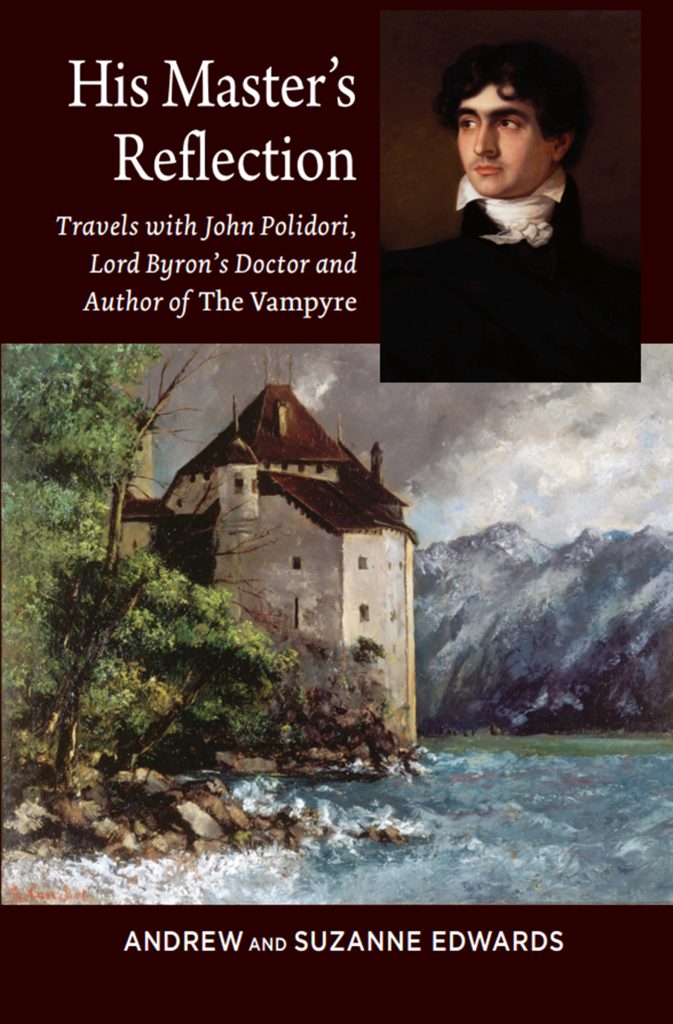
Qualifying as a doctor in 1815 at the tender age of nineteen, John Polidori was employed less than a year later by the poet, Lord Byron, as his travelling physician. The precocious medic was seemingly destined for a bright future that would enable him to combine his profession with a love of literature. In His Master’s Reflection, the authors follow Polidori’s footsteps as he accompanies Byron through Europe to Switzerland where they eventually meet the Shelleys and Claire Clairmont. Fulfilling his father’s prophecy, the fateful summer will prove to have a devastating impact on Polidori’s life and legacy.
Byron’s keen wit and elevated status would leave the sensitive doctor feeling isolated and undervalued. Fuelled by acerbic comments from the poet’s friends, Byron finally releases Polidori from his contract, leaving the penniless medic to wander over the Alps on foot to Italy, his father’s homeland. Despite attempts at establishing himself as a doctor to the expatriate community, he has to admit defeat and return to England. Still harbouring literary ambitions, his one chance at fame is cruelly denied when The Vampyre, the story he had written in Geneva, is attributed to Byron. Gossip and retelling of events have cast Polidori in the role of a petulant plagiarist. Concussion from a riding accident deeply affected Polidori’s temperament and behaviour, leaving questions surrounding his death, which history has recorded as suicide by prussic acid, despite the coroner’s verdict of ‘visitation of God’. The authors delve into his final years in an attempt to redress the balance. The handsome Polidori was more than just his master’s reflection.
Claire’s Last Secret by Marty Ambrose
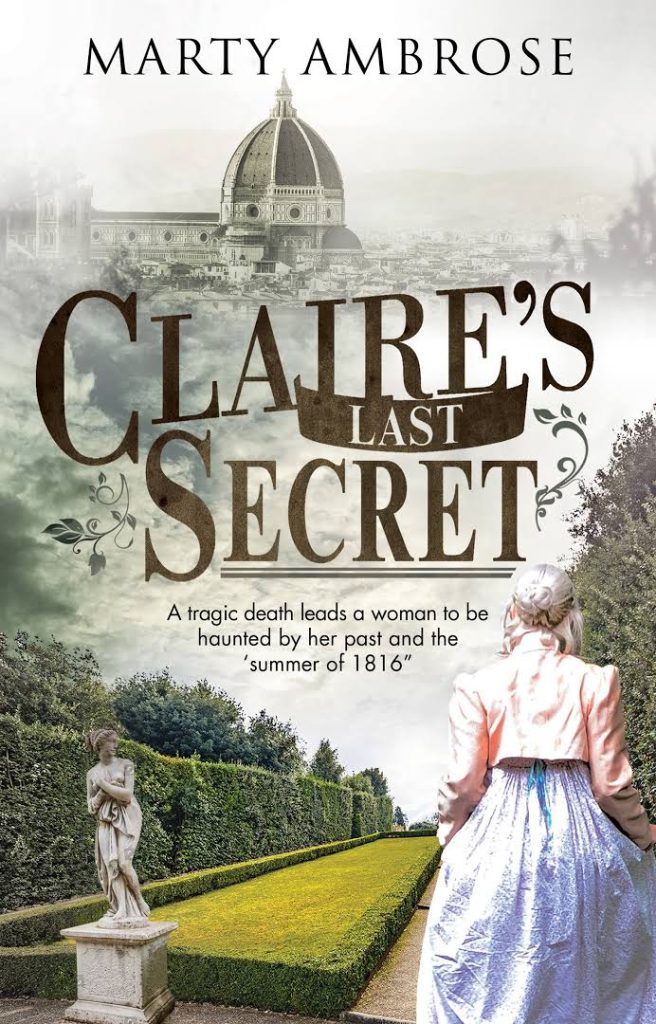
This is a work of historical fiction by one of our Byron Society members. The first book of a trilogy, Claire’s Last Secret is set in Florence in 1873. Claire Clairmont—the last survivor of the “haunted summer” Byron/Shelley circle is living out her final years in genteel poverty, with only the memories of her lost youth. Just at her moment of greatest despair, the appearance of British tourist, William Michael Rossetti, brings hope that she may be able to sell some of her memorabilia to earn enough cash to support her and her niece/companion, Paula. But Rossetti’s presence in Florence seems to begin a cycle of events that links with the summer of 1816 when Claire conceived an ill-fated child with George Gordon, Lord Byron, when Mary Shelley wrote Frankenstein, and when four tempestuous lives came together around a tragic death. As Claire begins to unravel the truth, she has to go back to that summer of passion and lost dreams to discover the identity of her ancient enemy.
Kindred Brutes: Animals in Romantic Period Writing by Dr Christine Kenyon Jones

Exploring the significance of animals in Romantic-period writing, this new study shows how in this period they were seen as both newly different from humankind (subjects in their own right, rather than simply humanity’s tools or adjuncts) and also as newly similar, with the ability to feel and perhaps to think like human beings. Approaches to animals are reviewed in a wide range of the period’s literary work (in particular, that of Byron, Wordsworth, Coleridge, Keats, Southey, Clare and Blake).
Poetry and other literary work are discussed in relation to discourses about animals in various contemporary cultural contexts, including children’s books, parliamentary debates, vegetarian theses, encyclopaedias and early theories about evolution. The study introduces animals to the discussions about ecocriticism and environmentalism in Romantic-period writing by complicating the concept of ‘Nature’, and it also contributes to the debates about politics and the body in this period. It demonstrates the rich variety of thinking about animals in the late-eighteenth and early-nineteenth centuries, and it challenges the exclusion of literary writing from some recent multi-disciplinary debates about animals, by exploring the literary roots of many metaphors about and attitudes to animals in our current thinking. Kindred Brutes constitutes a genuinely original and substantial contribution both to Romantic-period writing and to general debates about animals and the body.
Dear Mr Murray Letters to a Gentleman Publisher selected and edited by David McClay

Published 20th October 2018
The publishing house of John Murray was founded in Fleet Street in 1768 and remained a family firm over seven generations. A celebration of John Murray Publishers 250th anniversary this year, Dear Mr Murray is a collection of letters from the Publisher’s archive that make up some of literature’s most significant moments, including:
- Jane Austen complaining about the printing delay of a specially bound copy of Emma she wants to dedicate to the Prince Regent.
- George Bernard Shaw responding to John Murray’s rejection of Man and Superman.
- A literary adviser who recommends publication of Darwin’s observations on pigeons rather than On the Origin of Species.
- William Makepeace Thackeray apologising for his bad behaviour at a dinner.
- Adrian Conan Doyle challenging Harold Nicolson to a duel; Nicolson was purported to have insulted Arthur Conan Doyle in a review.
- Lord Byron furious with John Murray for being duped by his former girlfriend – Lady Caroline Lamb – who forged his signature to obtain a miniature Byron had intended for his mistress.
Despite the incredible number of letters that were retained by the Murray family, some failed to arrive, others were delayed and some barely survived, but longevity added to the reputation and fame of John Murray and a correspondent in Canada who addressed his letter merely to ‘John Murray, The World-wide famous Book & Publishing House, London, England’ as early as 1932 could be confident that his letter would arrive.
For more details and to purchase the book contact
Sprung From Divine Insanity: The Harmonious Madness of Byron, Keats and Shelley by Andrew Keanie

In Andrew Keanie’s exploration of the legacy of the later Romantics, we see the full challenge posed by Byron, Keats and Shelley to the rigid and life-denying orthodoxies underpinning an unjust world where words are bled to powerlessness and looked straight through by tyrants and their messengers as easily as non-existent ghosts.
The poets’ work was nothing less than an inspiring refusal to accept the prevailing wrongness of their world. Rather than being ‘mad, bad and dangerous to know’ themselves, the Romantics were pressurised into poetry by the madness, badness and dangerousness of the world in which they found themselves. It is a legacy, Andrew Keanie vividly demonstrates, which resonates down to the present day.
Byron and the Sea-Green Isle by Nicky Gayle

This study of Byron’s last complete long poem, the comparatively neglected The Island, is the first to devote a whole book to the examination, contextualization and motivation of both the poetry and its poet. It is much more than just a monograph, however; aside from biographical considerations, it illumines aspects of study that embrace feminism, racial politics and social considerations in relation to Polynesian island society, all of which are contrasted with the loose anarchy of an eighteenth century group of British mutineers.
Two historical contexts – the infamous 1789 mutiny on the Bounty and Byron’s life in the year that led up to the poem’s composition – serve as an extended prelude to a deep analysis of the major symbols and characters in the poem.
Its main chapters range beyond The Island, conducting a literary conversation with Shakespeare, Pope, 18th-century writers of memoirs and nautical sea history, classical authors and even Chinese poets, as well as other Romantic poets. Consideration is given to aspects of racial and feminist theory in relation to the poem’s extraordinary central female character; in particular there is a focus on her promotion of the poem’s happy ending, one that is quite unique in Byron’s oeuvre.
Return of the Gift, poems by Michael O’Neill

Michael O’Neill’s Return of the Gift is a volume about what is given and what is lost.
Writing unsentimentally and with insight about powerful subjects such as the death of his mother, caring for his father, and his own recent diagnosis of cancer, the poet speaks of and to his personal and historical life and also explores themes of elegy and friendship. Memories are woven vividly throughout a thematically varied yet coherent collection, in which a witty and moving pleasure in living and language is always to the fore.
Essays on Byron in Honour of Dr Peter Cochran, Breaking the Mould, edited by Malcolm Kelsall, Peter Graham, & Mirka Horová

Byron wrote that he was “born for opposition”. This collection of essays takes Byron at his word and explores ways in which he challenged received opinion in his lifetime. The essays also challenge commonplace attitudes in criticism of Byron today. In this, the volume honours the remarkable range of work of the late Dr Peter Cochran.
The matters covered here are Byron’s poetics, his ideology, and the principles and practice of editing his texts. In all, this book gathers original contributions from sixteen international scholars and friends of Peter Cochran.
The accessible, engaging style makes their work suitable for all readers of Byron, as well as undergraduates and professional academics.
Byron and Italy, edited by Alan Rawes & Diego Saglia

Byron in Italy – Venetian debauchery, Roman sight-seeing, revolution, horse-riding and swimming, sword-brandishing and pistol-shooting, the poet’s ‘last attachment’ – forms part of the fabric of Romantic mythology. Yet Byron’s time in Italy was crucial to his development as a writer, to Italy’s sense of itself as a nation, to Europe’s perceptions of national identity and to the evolution of Romanticism across Europe. In this volume, Byron scholars from Britain, Europe and beyond re-assess the topic of ‘Byron and Italy’ in all its richness and complexity. They consider Byron’s relationship to Italian literature, people, geography, art, religion and politics, and discuss his navigations between British and Italian identities.
The matters covered here are Byron’s poetics, his ideology, and the principles and practice of editing his texts. In all, this book gathers original contributions from sixteen international scholars and friends of Peter Cochran.
The accessible, engaging style makes their work suitable for all readers of Byron, as well as undergraduates and professional academics.

